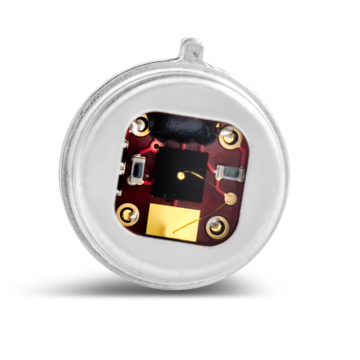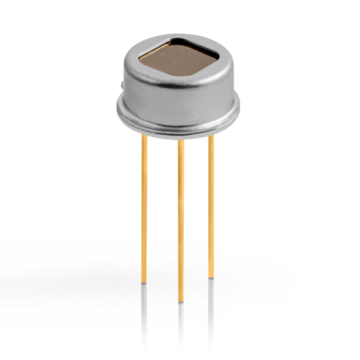Single-channel IR Detector
Due to the separate amplification, the signals add up linearly (i.e., they are doubled). The noise components only add up statistically; therefore, there is a net gain in the signal-to-noise ratio!
Compared to the bestseller L2100 series, we were able to double the signal of the new LD21xx series. At the same time, the noise was kept almost consistently low. Our R&D team has taken out the bag of tricks and optimized the components used accordingly. The actual improvement in the signal-to-noise ratio is therefore significantly higher than the purely theoretical value of 1.4.
In the LD2100, the two amplified signals are put out separately (i.e., the detector has a real differential output, which also makes differential signal routing possible): Any external interference signals that are picked up are eliminated by differential formation. In addition, the LD2100 series allows simple wiring in which the signal outputs are fed directly to the inputs of a differential A/D converter.
Contact
Our IR Detectors
Panchromatic, photoconductive and thermal detectors
InGaAs PIN Photodiodes
Modern InGaAs PIN photodiodes are panchromatic and convert broadband light to photocurrents in the Vis-NIR range. Concretely speaking, this means a sensitivity range from 500 nm to 1700 nm for regular InGaAs and – in increments – up to 2600 nm for extended InGaAs. Variations for data transmission are not panchromatic.
PbS and PbSe Detectors
PbS is a standard SWIR semiconductor detector (1 - 3.3 µm) whereas PbSe is used in the MWIR range (1 - 4.7 µm when uncooled; up to 5.2 µm when cooled). Our lead salt detectors are photoconductive; the detector resistance is reduced during illumination. The crystal structure is polycrystalline and is produced via chemical deposition.
Pyroelectric IR Detectors
A pyroelectric IR detector is a thermal detector in that it responds to the change in heat (IR) absorbed on its surface. Thermal detectors are polychromatic with a very wide spectral bandwidth.
The nature of the pyroelectric effect is that in a highly-ordered crystal (or ceramic), a temperature change in the element causes its atoms to move slightly out of position. This rearranges its electrical charge, which is measured in the electrodes on its surface.
The pyroelectric effect is found in many materials. The most commonly-used materials are deuterated lanthanum α alanine-doped triglycine sulfate (DLaTGS) and lithium tantalate (LTO).

What is Your Challenge?
Beyond Borders


LASER COMPONENTS Detector Group, Inc.
News & Events
from the infrared world






















